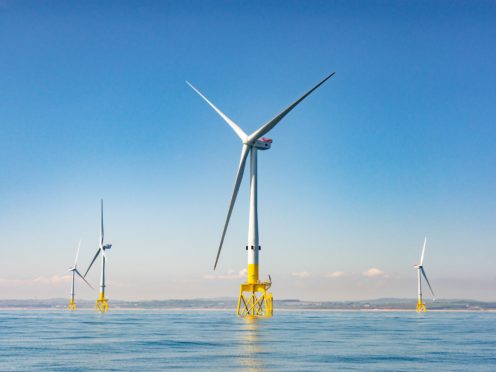
Scientists have developed fully autonomous robots which are able to inspect wind farms for damage.
Unlike many drones, these do not require a human operator and can assess the integrity of offshore wind turbines.
Those behind the devices believe they could help prevent technicians having to undergo the “dangerous and expensive” process of abseiling down turbines to carry out repairs.
Dr Mirko Kovac, director of the aerial robotics laboratory at Imperial College London, said: “Drones are currently used to visually inspect offshore wind turbines, but these inspections are remotely controlled by people on-site at the offshore location.
“Should an area of concern be found, technicians are required to carry out further inspection, maintenance or repair, often at great heights and therefore in high-risk environments.”

He added: “Our drones are fully autonomous. As well as visually inspecting a turbine for integrity concerns, ours make contact, placing sensors on the infrastructure, or acting as a sensor itself, to assess the health of each asset. Our technology could even deposit repair material for certain types of damage.
“This has far reaching applications including removing the need for humans to abseil down the side of turbines which can be both dangerous and expensive.
“Our drones could also reduce the number of vessels travelling to and from wind farms, providing the industry with both cost and environmental benefits.”
The technology was developed by the Offshore Robotics for the Certification of Assets (Orca) Hub, a consortium of five universities led by the Edinburgh Centre for Robotics, a partnership between Heriot-Watt University and Edinburgh University.
As well as Imperial College London, it also includes Oxford University and Liverpool University, working with industry to develop the use of robots in renewable energy.

Enjoy the convenience of having The Sunday Post delivered as a digital ePaper straight to your smartphone, tablet or computer.
Subscribe for only £5.49 a month and enjoy all the benefits of the printed paper as a digital replica.
Subscribe